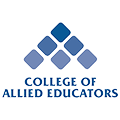It is estimated that up to 10% of the population are affected by specific learning disabilities, and children affected by a learning disability typically are affected by multiple learning disabilities. While many people assume that only slow children are affected, even children with high intelligence can be affected.
Some of the most common learning disabilities are:
Attention Deficit/Hyperactivity Disorder (ADHD)
This affects millions of children and is one of the most common. Children affected by ADHD have difficulties focussing, paying attention in class, and may also be hyperactive. This makes it difficult for them to sit still for prolonged periods as they are too physically and mentally distracted. Children who go undiagnosed often grow into adulthood with ADHD, where it may affect them professionally. ADHD is effectively treatable with behavioural therapy and appropriate medication.
Dyscalculia
Dyscalculia affects up to 7% of all students and is more difficult to diagnose than Dyslexia because it tends to exist alongside other conditions like ADHD, and treating these other conditions can sometimes diminish the effects of Dyscalculia. Young students with Dyscalculia may have difficulties reading numbers and understanding its connection to quantity. They may have difficulties performing basic addition and subtraction and the condition may persist into their teen years.
Dysgraphia
Children who have trouble expressing themselves in writing may have a condition known as ‘Dysgraphia’, or impaired writing. The most obvious signs are struggling to differentiate between upper and lower case letters and difficulties with written expression of ideas and thoughts, resulting in a bad composition. For children with dysgraphia, the writing process is challenging and slow, thus affecting their overall understanding in class. Seeking professionals or therapists can help to alleviate the severity of dysgraphia.
While specific learning disabilities may be common, there are still many children that go undiagnosed. As a result, they suffer academically, affecting their future prospects and opportunities as well as impacting their self-esteem. Once these children reach adulthood, their unaddressed learning disabilities still exist and may present itself in various ways to make personal and professional life difficult to manage.
In many cases, there are effective treatments and therapy that may be available. Having the child properly assessed, and as early as possible, is the first important step to ensuring they received the appropriate help they require.
If you are interested in learning about the different stages of your child’s learning and development, contact us for a FREE PREVIEW!
For a FREE COURSE PREVIEW
CALL US at 6533-0031
EMAIL your enquiry to alex.dtl@icae.edu.sg
or Register for your free preview below:

